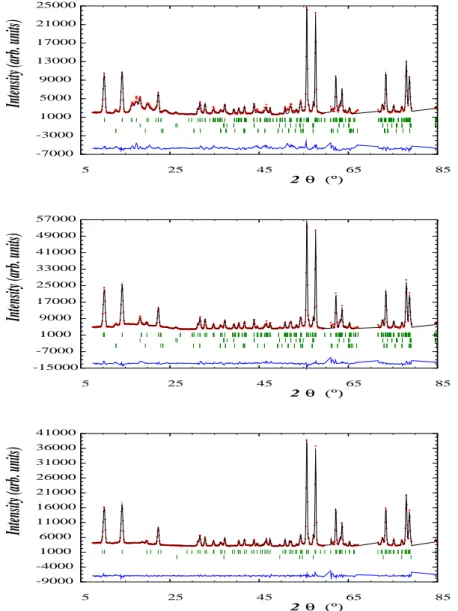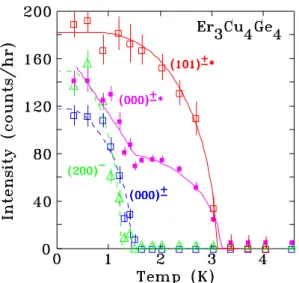Publisher’s version / Version de l'éditeur:
Journal of Physics Conference Series, 200, pp. 1-4, 2010-12-01
READ THESE TERMS AND CONDITIONS CAREFULLY BEFORE USING THIS WEBSITE. https://nrc-publications.canada.ca/eng/copyright
Vous avez des questions? Nous pouvons vous aider. Pour communiquer directement avec un auteur, consultez la
première page de la revue dans laquelle son article a été publié afin de trouver ses coordonnées. Si vous n’arrivez pas à les repérer, communiquez avec nous à PublicationsArchive-ArchivesPublications@nrc-cnrc.gc.ca.
Questions? Contact the NRC Publications Archive team at
PublicationsArchive-ArchivesPublications@nrc-cnrc.gc.ca. If you wish to email the authors directly, please see the first page of the publication for their contact information.
Archives des publications du CNRC
This publication could be one of several versions: author’s original, accepted manuscript or the publisher’s version. / La version de cette publication peut être l’une des suivantes : la version prépublication de l’auteur, la version acceptée du manuscrit ou la version de l’éditeur.
For the publisher’s version, please access the DOI link below./ Pour consulter la version de l’éditeur, utilisez le lien DOI ci-dessous.
https://doi.org/10.1088/1742-6596/200/3/032009
Access and use of this website and the material on it are subject to the Terms and Conditions set forth at
The incommensurate magnetic structure of Er3Cu4Ge4 below 1 K
Cadogan, J. M.; Ryan, D. H.; Cranswick, L. M. D.
https://publications-cnrc.canada.ca/fra/droits
L’accès à ce site Web et l’utilisation de son contenu sont assujettis aux conditions présentées dans le site LISEZ CES CONDITIONS ATTENTIVEMENT AVANT D’UTILISER CE SITE WEB.
NRC Publications Record / Notice d'Archives des publications de CNRC:
https://nrc-publications.canada.ca/eng/view/object/?id=e2fa989c-cb03-48e5-b8cb-c16c0dc071e0 https://publications-cnrc.canada.ca/fra/voir/objet/?id=e2fa989c-cb03-48e5-b8cb-c16c0dc071e0
The incommensurate magnetic structure of Er
3Cu
4Ge
4below 1 K
J M Cadogan1, D H Ryan2 and L M D Cranswick3
1
Department of Physics and Astronomy, University of Manitoba, Winnipeg, Manitoba, R3T 2N2, Canada
2
Department of Physics, McGill University, Montreal, Qu´ebec, H3A 2T8, Canada 3
Canadian Neutron Beam Centre, NRCC, Chalk River Laboratories, Chalk River, Ontario, K0J 1J0, Canada
E-mail: cadogan@physics.umanitoba.ca
Abstract. The magnetic structure of Er3Cu4Ge4 was previously studied down to 1.5 K by Wawrzy´nska et al. who found that the Er(2d) sublattice orders at 8 K in a commensurate, doubled structure (kd = [0
1
2 0]) with an Er moment close to the free-ion value of 9 µB. By contrast, the Er(4e) sublattice ordered at 3.5 K in an incommensurate structure (ke = [0 0.883(2) 0]) with a greatly reduced moment (about one-third of the free-ion value). We have extended this study by high-resolution neutron powder diffraction down to 0.34 K in an effort to establish if the Er(4e) sublattice eventually locks-in and attains its free-ion moment (in keeping with our 166
Er M¨ossbauer work). We observed a change in the Er(4e) order, beginning at 1.4 K, leading to a magnetic structure at 0.34 K which has almost locked-in but with (ke = [0.1
2
3 0]) and a still-reduced Er moment.
1. Introduction
The orthorhombic R3Cu4X4 (X = Si, Ge, Sn) compounds exhibit a rich variety of magnetic ordering behaviour which depends on both the rare-earth (R) and metalloid (X) present. The R atoms occupy two crystallographic sites in the 3:4:4 structure (2d and 4e), and the magnetic moments observed at the two R sites are generally quite different from each other. In some cases, the refined R moment is greatly reduced from the corresponding R3+ free-ion value. Furthermore, the magnetic ordering temperatures and directions at the two R sites are often different.
Wawrzy´nska et al. [1] carried out neutron powder diffraction on Er3Cu4Ge4 down to 1.5 K and reported that the Er(2d) site orders at 8 K whilst the Er(4e) site orders at 3.5 K. At 1.5 K, the refined Er(2d) moment was 8.9(2) µB, ordered along the crystal c-axis, with a propagation vector [0 ∼1
2 0]. This is the free-ion Er 3+
moment of 9 µB. The Er(4e) order was reported to be incommensurate, with the Er3+ moments ordered along the a-axis, described by a propagation vector [0 0.883(2) 0]. Curiously, the refined Er(4e) at 1.5 K was only 3.2(2) µB, about one-third of the free-ion value.
At the same time as the Wawrzy´nska et al. [1] study, we published a study of the R3Cu4X4 (X = Si, Ge, Sn) compounds [2] in which we presented the results of our 166
Er M¨ossbauer spectroscopy work. 166
Er M¨ossbauer spectroscopy showed that at 2 K the Er(2d) moment in Er3Cu4Ge4is 8.5(1) µB and the Er(4e) moment is 7.1(1) µB, more than twice the value deduced
from neutron diffraction data. However, our own neutron diffraction experiments confirmed the findings of Wawrzy´nska et al. [1] that the refined Er(4e) moment at 1.5 K is only about one-third of the free-ion value. The apparent dichotomy in the measured magnetic moments at the Er(4e) site is a consequence of the local versus extended natures of the two measurement techniques. We showed that at 2.4 K the Er(4e) order is incomplete and quite short-range, and we estimated the correlation length to be about 10 ˚A from the width of the broad feature in the neutron diffraction patterns.
In this paper we extend our neutron powder diffraction measurements on Er3Cu4Ge4 down to 0.34 K in order to follow the ordering behaviour and the temperature dependence of the magnetic moments on the two Er sites in detail. In particular, our aim was to determine if the Er(4e) moment eventually forms an extended magnetic structure with a long enough correlation for neutron diffraction to yield a free-ion moment for the Er(4e) sublattice, consistent with our 166
Er M¨ossbauer work [2]. 2. Experimental Methods
The Er3Cu4Ge4 sample was prepared in a tri-arc furnace with a base pressure of less than 6 ×10−7 mbar. Stoichiometric amounts of the pure elements (Er (99.9%), Cu (99.99%), Ge (99.999%) were melted several times under pure (less than 1 ppm impurity) argon to ensure homogeneity. The resulting ingot was annealed in vacuo at 800◦C for two weeks and water-quenched. Powder x-ray diffraction measurements were made at room temperature using Cu Kα radiation. Analysis confirms that the sample was primarily composed of the orthorhombic Er3Cu4Ge4 phase, (Gd3Cu4Ge4-type structure [3], with the Immm space group #71). The sample also contained about 3 wt.% ErCuGe (hexagonal P 63/mmc) impurity. The Er3Cu4Ge4 structure has two Er sites (2d and 4e), one Cu site (8n) and two Ge sites (4f and 4h). The refined lattice parameters of Er3Cu4Ge4 at RT are a = 13.8356(4) ˚A, b = 6.6295(2) ˚A and c = 4.1650(1) ˚A.
Neutron powder diffraction experiments were carried out on the DUALSPEC C2 high-resolution diffractometer at the NRU reactor, Chalk River Laboratories. The neutron wavelength was 2.37164(14) ˚A. Diffraction patterns were obtained over the temperature range 0.34–295 K and all patterns were analysed using the Rietveld method and the FULLPROF/WinPLOTR program [4] [5]. For the neutron diffraction experiments, the sample was mixed with an approximately equal volume of pure (99.99 %) copper powder and hydraulically pressed into an OFHC copper sample holder in order to ensure proper thermalisation of the powder sample at the very low temperatures used here [6]. From 295 K to 4 K, the neutron diffraction data were collected with the sample loaded into a vanadium sample can in a Janis closed cycle fridge using Helium exchange gas. The lower temperature data from 20 K to 0.34 K were collected using an Oxford Heliox insert working with a standard Helium cryostat and a copper can [6]. 3. Results
In figure 1 we show a comparison of the neutron powder diffraction patterns obtained on Er3Cu4Ge4 at 0.34 K, 1.8 K and 5.4 K. The only magnetic contribution to the 5.4 K pattern is from the order of the Er(2d) moments which is clearly shown by the appearance of the prominent (0 ±1
2 0) and (1 ± 1
2 0) peaks, at 2θ = 10.3◦ and 14.3◦, respectively. The refined Er(2d) moment at 5.4 K is 7.9(1) µB.
The Er(4e) order sets in around 3.5 K but is superimposed on a broad background which we showed in our previous paper [2] reflects the short-range ordering. In figure 2 we show the temperature dependences of the integrated intensities of three of the Er(4e) magnetic peaks in the diffraction patterns of Er3Cu4Ge4. The sudden change in magnetic order of the Er(4e) sublattice around 1.4 K is striking.
5 25 45 65 85 -7000 -3000 1000 5000 9000 13000 17000 21000 25000 2 θ (º)
Intensity (arb. units)
5 25 45 65 85 -15000 -7000 1000 9000 17000 25000 33000 41000 49000 57000 2 θ (º)
Intensity (arb. units)
5 25 45 65 85 -9000 -4000 1000 6000 11000 16000 21000 26000 31000 36000 41000 2 θ (º)
Intensity (arb. units)
Figure 1. Comparison of the neutron powder diffraction patterns of Er3Cu4Ge4 obtained at 0.34 K (top), 1.8 K (middle) and 5.4 K (bottom). Two sections (2θ ∼ 69◦; ∼ 82◦) containing the strong peaks from the copper have been removed.
Our refinement of the 0.34 K pattern is shown in figure 1. The standard refinement factors are R(Bragg)=7.0 and R(F)=7.9. We find that the Er(2d) order remains unchanged from that found at higher temperatures. The Er(2d) propagation vector is [0 1
2 0] with a refined Er(2d) moment of 8.7(1) µB. The Er(4e) order at 0.34 K has almost locked-in, with a propagation vector [0.1 23 0] and a still-reduced Er moment of only 3.5(2) µB. This behaviour is different from that we have observed in the isostructural silicide Er3Cu4Si4 where we recently found that the Er(4e) has locked-in by 0.34 K [7]. This difference in magnetic behaviour is most likely related to the increased Er-Er separation in the germanide and the ensuing reduction in the strength of the indirect exchange between Er3+ spins.
One remaining question is whether the modulation of the Er(4e) order is square or sinusoidal. Our166Er M¨ossbauer work [2] strongly suggested that the Er(4e) order is a square-wave since we found no evidence of a distribution of166
Er hyperfine field (and hence Er3+
Figure 2. Temperature dependences of selected Er(4e) magnetic peaks in Er3Cu4Ge4. The asterisk after some indices refers to the higher-T propagation vector [0 0.883(2) 0]
of the third-harmonic of the Er(4e) propagation vector is difficult to observe in these patterns but we have some evidence, albeit tentative, for its appearance. This would confirm our claim based on our 166Er M¨ossbauer work that the (4e) order is square-wave.
In conclusion, the magnetic structure of the Er(2d) sublattice in Er3Cu4Ge4is commensurate and doubled along the crystal b-axis. The Er(2d) moments attain the free-ion value and are ordered along the crystal c-axis. By contrast, the magnetic structure of the Er(4e) sublattice is short-range and incommensurate down to 0.34 K, with the refined Er(4e) moments still significantly reduced from the free-ion value of 9 µB.
Acknowledgments
We are grateful for financial support from the Natural Sciences and Engineering Research Council of Canada and Fonds Qu´eb´ecois de la Recherche sur la Nature et les Technologies. We also thank the staff at Chalk River for their assistance during the neutron diffraction experiments. The Er3Cu4Ge4 sample was prepared by Robert Gagnon (McGill University). Finally, JMC acknowledges support from the Canada Research Chairs programme.
References
[1] E. Wawrzy´nska, J. Hern´andez-Velasco, B. Penc, A. Szytula and A. Zygmunt, J. Magn. Magn. Mater. 264 192 (2003).
[2] D.H. Ryan, J.M. Cadogan, R. Gagnon and I.P. Swainson, J. Phys. Condensed Matter 16 3183 (2004). [3] W. Rieger, Monat. f. Chemie 101, 449–462 (1970): G. Hanel and H. Nowotny, Monat. f. Chemie 101, 463–468
(1970).
[4] J. Rodr´ıguez-Carvajal, Physica B 192, 55 (1995)
[5] T. Roisnel and J. Rodr´ıguez-Carvajal, Mater. Res. Forum 378–381, 118 (2001). [6] D.H. Ryan and I.P. Swainson, J. Appl. Cryst. 42 43-47 (2009).
[7] J.M. Cadogan, D.H. Ryan and L.M.D. Cranswick, International Conf. on Neutron Scattering, Knoxville, USA, 2009., J. Phys. Conf. Series, accepted for publication.

